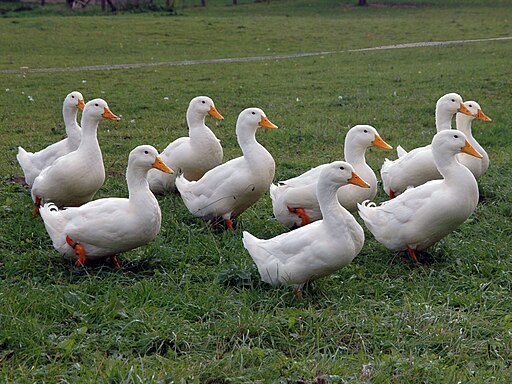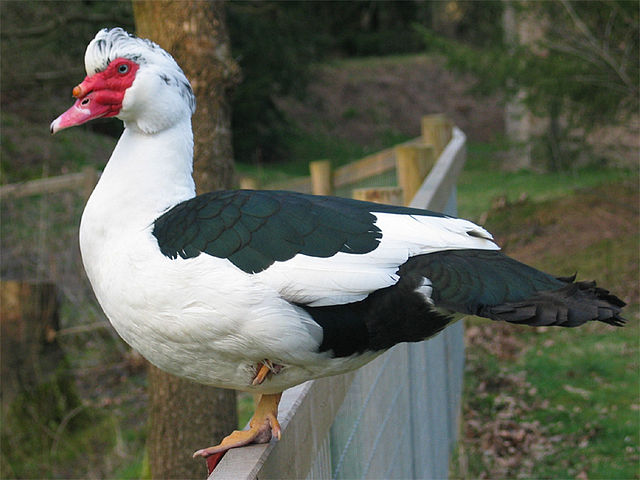Who is ready for some duck-based confusion? As we dive into the world of duck breeding and hybrids, get ready to meet the mallard, the moulard, and the mulard. Try saying those five times fast!
The mallard (Anas platyrhynchos) is what we would call the true wild duck species, found worldwide in parks and ponds, and despite some pretty wacky breeding and feeding behavior is otherwise pretty typical.
And so to the mulard, also called a moulard. These ducks are hybrids between Muscovy ducks (Cairina moschata) and White Pekins. Like many hybrids, they are sterile, and while they can be made by breeding normally they are often created by artificial insemination in hatcheries.
They are bred this way because the moulard is kept and reared for meat, which is said to have a rich and bold flavor. Other tasty hybrids are often found in the fruit and vegetable world – grapefruits and yellow bananas are just some varieties that have been created through hybridization.
As well as for their meat, mulards are one of the most popular duck types to use for making foie gras and make up the vast majority of foie gras sold in the world. Foie gras is made from duck liver that has been fattened by a force-feeding method. The Royal Society for the Prevention of Cruelty to Animals (RSPCA) opposes foie gras production on welfare grounds.

White Pekins can produce mulards or hinnies as hybrids with Muscovy ducks.
To create a mulard, the male (or the drake) is a Muscovy duck and the female (or the hen) is a Pekin. If this is the other way around the offspring are called Hinnies.

Muscovy duck males breed with white pekins to create the mulard hybrid.
Mulards are said to inherit their large size, dark meat, and tolerance for hot weather from their Muscovy duck dads, while the Pekin parent gives them their typical white feathers and calm personalities. Mulards are typically white but may have patches of black feathers. They typically have pink feet and pink beaks.
According to Ducks Unlimited, waterfowl crossbreed more often than any other family of birds, and more than 400 hybrids have been observed between waterfowl species.
While some hybrids result from species encroaching on new territories, like the case of the dog-fox hybrid, others are the result of forced copulations between species. A 2008 study found that records of hybrid waterfowl had increased significantly between 1934 and 2006, suggesting the reason could be because of increased observations and more frequent use of field guides.
Source Link: Meet The Mulard: Hybrid Ducks Bred For A Controversial Human Delicacy